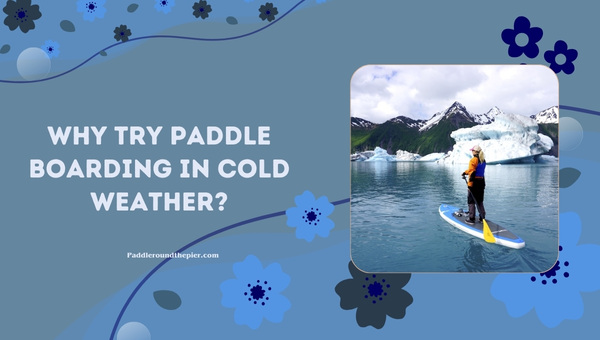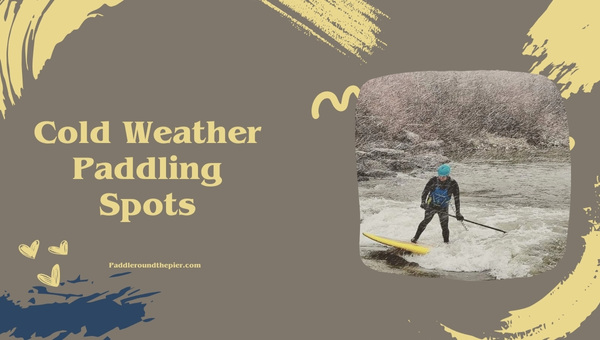Top 5 Tips for Cold Weather Paddle Boarding
Are you an adventurer at heart who loves the thrill of conquering new challenges? In that case, cold weather paddle boarding could be your next exhilarating venture. Not many experiences in life parallel steering your board gently over freezing water while absorbing the quiet beauty of a bleak winter landscape. However, while it may sound appealing, paddleboarding in low temperatures is a challenge that calls for apt preparation.
If you've ever caught yourself wondering about how you can mix up your typical summer water sports routine or broaden your horizon with something unique and daring, then this is indeed for you!
Through this guide, I aim to familiarize you with the concept of cold weather paddle boarding, braving the harsh conditions like a pro all while staying safe and warm.
What You'll Gain From This Reading:
- Valuable Insight: Understand why winter paddle boarding could be your next great adventure.
- Practical Guidance: Get exposed to essential tips on mastering cold-weather paddling.
- Expert Recommendations: Learn about choosing the right gear intended specifically for frosty conditions.
- Fitness Advice: Stay fit and flexible during colder months tailored towards enhancing your paddling experience.
- Location Ideas: Discover some top destinations worldwide where you can enjoy this exciting sport safely.
Why Try Paddle Boarding in Cold Weather?
Cold weather paddle boarding brings its unique set of challenges that can surprisingly make the sport even more rewarding. Many might question why anyone would choose to face the frigid temperatures when they could comfortably stick to warmer climates.

Unique Challenges
Well, I love paddleboarding because it’s not only a way to exercise but also a chance for some adventure and quiet introspection. Adding a twist of cold weather into this mix, quite interestingly, enhances all these elements. The cold serves as your push – a test of your resilience as you confront biting winds and icy waters.
Moreover, the refreshing crisp air and serenity you experience during winter paddleboarding are unrivaled—the placid water under a blanket of snow presents mesmerizing vistas that are absolutely breathtaking.
Preparation Importance
Preparation is vital for any outdoor activity, but it becomes even more critical when participating in cold-weather paddle boarding. In low temperatures, clothing selection plays an essential role in maintaining body heat—my personal recommendation would be layers that hold well against wind chills while providing mobility. Materials like neoprene work wonders in these situations.
Also crucial is equipment maintenance—pay extra attention to your gear's quality! Inspect your board thoroughly before heading out; cracks or damage might mean trouble once out on the water.
Finally, always keep emergency contact information accessible—a waterproof pouch for storing mobile phones or distress signal devices is ideal. Communication can be life-saving if unforeseen circumstances arise.
Dressing appropriately and having dependable equipment aren't mere options—they're necessities when you're venturing into cold water paddle-boarding techniques!
Making necessary preparations not only ensures safety but also adds to an enjoyable winter paddleboarding experience—a well-thought-out plan will have me focusing on my paddle strokes instead of worrying about things going wrong!
Also Read: Kayaking Merit Badge: Get Your Complete Guide
5 Essential Tips for Mastering Cold Weather Paddle Boarding
Want to continue your love for paddle boarding even during the chilliest months of the year? Here's a guide on how you can beat the cold weather to enjoy your paddle boarding experience without compromising comfort or safety.
1. Dress Appropriately
The first step towards mastering cold weather paddle boarding is dressing appropriately.
- Ensure warmth by opting for materials designed specifically for low temperatures: thermal rash vests underneath your wetsuits or drysuits are excellent choices.
- Neoprene gloves and surfing booties prevent heat loss from extremities.
- Using either full hoods or beanies will shield your head from the freezing wind.
Remember this tip and you'll stay relatively snug in the cold water.
2. Invest in the Right Equipment
Investing in proper equipment significantly contributes to successful winter paddling adventures. This might be as straightforward as finding yourself a good-quality wetsuit designed specifically for colder climates - look for ones with thicker insulating materials that keep you comfortably heated even during long sessions.
Your regular board might suffice but investing in something specific for these conditions could prove worthwhile. Boards with more volume offer increased stability, which compensates against choppier and unpredictable winter waters.
3. Prioritize Safety
Paddle boarding in low temperatures requires particular mindfulness of safety measures.
- Understanding the influence of cold water on your body is critical. The shock of cold water immersion can make you lose your breath or even lead to hypothermia.
- Regularly monitoring weather forecasts, keeping an eye out for sudden wind changes, and giving a wide berth to ice formations are core to ensuring your safety under frigid conditions.
4. Stay Fit and Flexible
Staying fit during winter forms a core part of effective cold-weather paddle-boarding techniques. As the temperatures drop, maintaining flexibility becomes more critical as muscles tend to tighten up in the cold.
Simple routines, like a series of yoga or pilates before hitting the water, could help keep core muscles warm and limber. By doing so, you give yourself better control while maneuvering your board, improving balance and efficiency.
5. Identify Your Limits
The final but equally essential tip is understanding one’s own limits where physical exertion against varying elements is considered. No two people handle the challenges posed by colder weather similarly.
Awareness about personal capabilities helps evaluate how long one can paddle without risking frostbite or other health hazards related to severe chill exposure.
Also Read: The Ultimate Guide to Custom Paddle Boards
Cold Weather Paddling Spots
Paddleboarding in low temperatures opens up an entirely new world of experiences, sights, and challenges. When the crowds pack up and retreat for the warmth of indoors, you can have the waterways all to yourself.

Yet, not every water destination is created equal when it comes to cold weather paddle boarding. Allow me to introduce you to some of the top destinations across the globe where you can enjoy winter paddle boarding safely.
Top Destinations
When it comes to cold weather paddle boarding, certain spots rise above the rest due to their unique characteristics and conditions. Here are a few that I would highly recommend:
- Lake Tahoe, California/Nevada – USA: Reflecting majestic snow-capped mountains on its crystal-clear waters, Lake Tahoe is quite simply a winter paddler's paradise. Its calm waters during wintertime make for a serene and peaceful SUP (Stand Up Paddleboarding) experience.
- Banff National Park – Canada: Known for its scenic vistas and aquamarine glacier-fed lakes like Lake Louise and Moraine Lake, Banff offers unrivaled beauty that's even more magical under snowfall.
- Fjords in Norway: If you're feeling adventurous enough for extreme cold weather paddle boarding conditions combined with magnificent views that justify every shiver, head towards Norway’s Fjords.
- Jokulsarlon Glacier Lagoon – Iceland: Ever thought about drifting between icebergs on your board? The Jokulsarlon glacier lagoon offers this unique opportunity for experienced paddlers seeking unusual adventure.
- The Great Lakes – USA/Canada: Offering one of North America’s best freshwater SUP experiences in winter months, Lakes Superior or Michigan can be amazing choices.
However glacial these locations may seem (quite literally), remember safety has no off-season when practicing cold water paddle boarding techniques! Always check weather conditions, temperature, and ice conditions before setting out.
Understand the risks of hypothermia and invest in a good-quality wetsuit tailored for colder climates to stay warm while paddle boarding. One more thing - never forget to inform someone about your touring plans before you leave.
Cold weather paddle boarding certainly holds many unique choices for the avid paddler. So set sail and push your limits! Explore, and enjoy, but always prioritize safety along with the fun.
FAQs
Are there particular types of boards better suited for cold weather?
Absolutely, inflatable paddle boards with high-density layered construction tend to deal better with cold conditions.
What should I do if I fall into the water during a cold-weather session?
It's vital to get back onto your board immediately. If hypothermia sets in, seek medical attention ASAP.
How do I store my gear after winter season paddling?
After every use, clean and dry your gear thoroughly. Store it in a cool and dry place away from direct sunlight.
Can anyone try paddle boarding regardless of experience level?
Yes! However, beginners are advised to start in warmer conditions before venturing into cold weather paddle boarding.
Conclusion
As I've delved into the nuances of cold weather paddle boarding, it’s clear this activity can be both exhilarating and challenging. It requires preparation, the right gear, and a keen sense of safety.
But if approached with patience and respect for one's physical limits, it can lead to some unforgettable experiences. Moreover, the stunning winter paddle boarding spots nestled across the globe are a cherry on top of this unique adventure.
